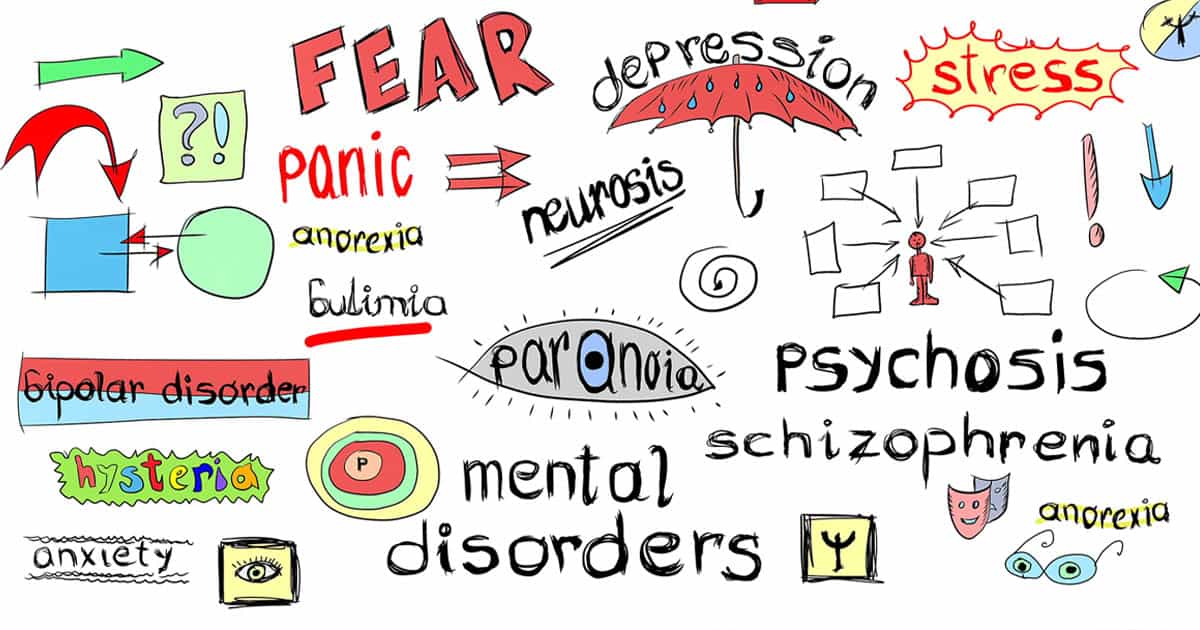An overview of Emotional and Behavioral Disorders
What Are Emotional and Behavioral Disorders?
Emotional and behavioral disorders are specific mental health disorders that cause extreme difficulties with both emotions and behaviors. They affect a child’s functioning in most or all areas of their life.
An emotional and behavioral disorder negatively impacts a child’s ability to be successful in school, control feelings and actions, and generally be happy in life. These disorders affect the whole child— feelings, behaviors, social development, and cognitive functioning. Children living with an E/BD have a hard time coping with life’s numerous demands.

Types of Emotional and Behavioral Disorders
The following disorders can occur in children over the age of five. While signs can be present before age five, a diagnosis is almost never made in very young children. Even in older children, these diagnoses are made only with extreme caution, as there is controversy around the notion of labeling children.
Children can be diagnosed with the following types of emotional and behavioral disorders:
1. Anxiety disorders : We all experience anxiety from time to time, but for many people, including children, anxiety can be excessive, persistent, seemingly uncontrollable, and overwhelming. An irrational fear of everyday situations may be involved. This high level of anxiety is a definite warning sign that a person may have an anxiety disorder.
2. Bipolar disorder : Also known as manic-depressive illness, bipolar disorder is a serious medical condition that causes dramatic mood swings from overly “high” and/or irritable to sad and hopeless, and then back again, often with periods of normal mood in between. Severe changes in energy and behavior go along with these changes in mood.
3. Psychotic disorders : Psychotic disorders is another umbrella term used to refer to severe mental disorders that cause abnormal thinking and perceptions. Two of the main symptoms are delusions and hallucinations. Delusions are false beliefs, such as thinking that someone is plotting against you. Hallucinations are false perceptions, such as hearing, seeing, or feeling something that is not there. Schizophrenia is one type of psychotic disorder.
4. Obsessive-compulsive : Often referred to as OCD, obsessive-compulsive disorder is actually considered an anxiety disorder (which was discussed earlier in this fact sheet). OCD is characterized by recurrent, unwanted thoughts (obsessions) and/or repetitive behaviors (compulsions). Repetitive behaviors (handwashing, counting, checking, or cleaning) are often performed with the hope of preventing obsessive thoughts or making them go away. Performing these so-called “rituals,” however, provides only temporary relief, and not performing them markedly increases anxiety.
5. Attention-deficit/hyperactivity disorder
6. Oppositional-defiant disorder
7. Conduct disorder : Conduct disorder refers to a group of behavioral and emotional problems in youngsters. Children and adolescents with this disorder have great difficulty following rules and behaving in a socially acceptable way. (14) This may include some of the following behaviors:
What causes Emotional and Behavioral Disorders?
No one knows the actual cause or causes of emotional disturbance, although several factors—heredity, brain disorder, diet, stress, and family functioning—have been suggested and vigorously researched. A great deal of research goes on every day, but to date, researchers have not found that any of these factors are the direct cause of behavioral or emotional problems.
According to NAMI, mental illnesses can affect persons of any age, race, religion, or income. Further: Mental illnesses are not the result of personal weakness, lack of character, or poor upbringing. Mental illnesses are treatable. Most people diagnosed with a serious mental illness can experience relief from their symptoms by actively participating in an individual treatment plan.
Signs and symptoms of Emotional and Behavioral Disorders
Children with E/BD have distinct traits that set their emotions and behaviors apart from other, less extreme actions or feelings. These characteristics of the emotional and behavioral disorder can include:
1. Impulsiveness.
2. Short attention span.
3. Aggression, such as acting out or fighting.
4. Defiance, refusal to follow rules.
5. Difficulty handling frustration.
6. Blaming others, denying responsibility for actions.
7. Excessive fear, often in reaction to personal problems.
8. Self injury.
9. Difficulty forming and keeping relationships with other children, teachers, and even family members.
10. Pervasive unhappy and/or angry mood.
Dealing with Emotional and Behavioral Disorders
Parenting, teaching, or otherwise caring for a child with emotional and behavioral disorders is challenging and exhausting ("Parenting Is Hard! How to Conquer Burnout and Exhaustion"). Knowing that your child’s taxing behavior and general intensity isn’t personal can help you put it in perspective. Emotional and behavioral disorders are psychiatric illnesses, which means they affect the brain and how it functions. These kids aren’t trying to be difficult (conduct disorder may be an exception). They need help and support so they experience life more positively and, by default, so others in their lives can experience life more positively, too.
Professional mental health help is essential for these children. To help with school success, many kids with emotional and behavioral disorders qualify for special education services. In addition to these professional supports, the more you as a parent or caregiver understand about emotional and behavioral disorders and the types and characteristics, the better able you’ll be to understand your child and help them get through times of strong emotions and undesirable behaviors.
Frequency
According to the CDC (Centers for Disease Control and Prevention), approximately 8.3 million children (14.5%) aged 4–17 years have parents who’ve talked with a health care provider or school staff about the child’s emotional or behavioral difficulties. (6) Nearly 2.9 million children have been prescribed medication for these difficulties.
Frequently Asked Questions About Emotional and Behavioral Disorders?
There are several different causes of emotional and behavioral disorders. The most common include an unstable home life, trauma, and a family history of mental disorders.